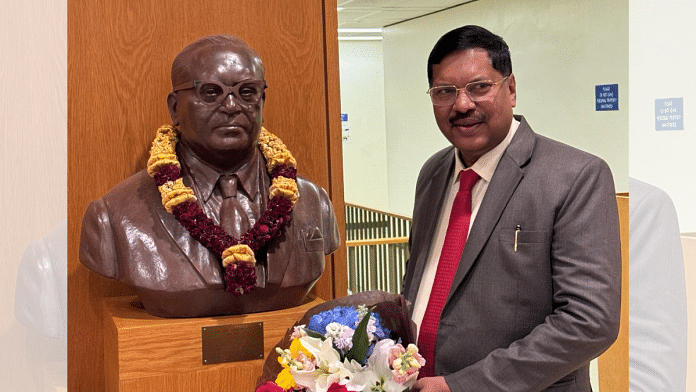New Delhi: The Supreme Court’s Justice B.R. Gavai said Wednesday that his appointment in 2019 was sped up to give representation to the Scheduled Castes in the top court, as there had been no judge from the community in almost a decade.
He credited the Indian Constitution and the mandate of affirmative action and inclusion for being able to serve the highest judicial office, adding, “If not for giving representation to Scheduled Castes, I would have been elevated maybe two years later.”
Justice Gavai was speaking at an event hosted by the New York City Bar for a cross-cultural discussion on the role of the judiciary in India and the United States in upholding the rule of law and advancing individual rights.
He sat in conversation with Judge Joseph Zayas, who rose from a public housing project in West Harlem to become the first Latino judge to serve as Chief Administrative Judge, New York State. The event was moderated by Justice Ushir Pandit-Durant, who was the first South Asian judge elected to the New York State Supreme Court in Queens and the first South Asian woman judge elected in New York State.
Justice Gavai joined the bar and started practising as a lawyer in March 1985 in the Bombay High Court. He was elevated as an additional judge in November 2003 and became a permanent judge in November 2005. He is in line to become the Chief Justice of India in May 2025, the second from the Scheduled Caste community after Justice K.G. Balakrishnan.
Justice Gavai spoke about the role of affirmative action in India, saying members of marginalised communities had been able to reach top government positions because of it. He pointed out when he was appointed as a judge in the Bombay High Court in 2003, he was a leading lawyer, and that there were no judge from the Dalit and Scheduled Caste communities in the high court.
“That may be one of the factors in my appointment as a HC judge,” he said. On a lighter note, the judge also spoke about his love for Maharashtrian and Gujarati food, particularly dhokla.
‘Judicial review ensures supremacy of Constitution’
Justice Gavai also spoke at the Harvard Kennedy School on Thursday, on the topic — “How judicial review shapes policy”. He said judicial review was a process through which courts have been empowered to review legislative acts, administrative actions, and even constitutional amendments. Judicial review, he asserted, ensures the supremacy of the Constitution, and remains a roadblock for any abuse of power by the legislature.
He took the audience through examples of the Supreme Court striking down statutes and regulations which were found to be inconsistent with the Constitution. He also gave examples of constitutional courts shaping policy changes by filling the constitutional vacuum and legislative gaps. For example, he said, the Supreme Court had issued the “Vishaka guidelines” in a 1997 judgment, before the Parliament enacted the Sexual Harassment of Women at Workplace (Prevention, Prohibition and Redressal) Act 2013.
Justice Gavai also highlighted the concept of “dialogical judicial review”, through which the court assumes the function of a forum for communication between the government, the court, and the litigants. He cited the example of how the Supreme Court engaged in a dialogue with the Union government on the availability of oxygen and vaccines during the Covid-19 pandemic, “allowing them to explain the reasons behind its actions while observing due deference”.
‘Prescribing correct recourse’
At Harvard Kennedy School, Justice Gavai asserted that the court’s mission extended beyond just interpreting the language of the law in a vacuum and striking down legislation or administrative activities that were inconsistent with the Constitution.
“It shall also extend to remedying the situation at hand by issuing frequent directives and prescribing correct recourse that political branches need to do to meet constitutional standards,” he explained.
In conclusion, he said that making policy was not within the judiciary’s realm, but added that in several cases, the courts have laid down policy guidelines or issued administrative directives to the government to act in people’s interests.
“Increasingly, countries across the globe see judicial review as not only a mechanism for checks and balances but also a tool to ensure that institutions work in the interest of its citizens,” he said.
(Edited by Tikli Basu)
Also read:



